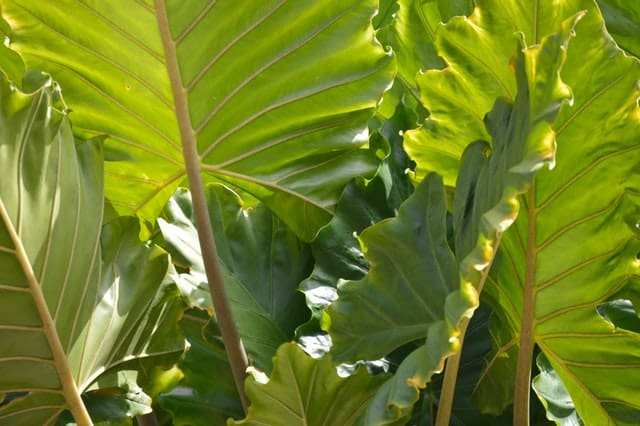Do you know that the Philodendron Chinchamayense exudes an aura of brightness that can lighten up your home? Apart from this aesthetic appeal, it’s also an air purifier. There are many fascinating things about this plant. Keep up with this piece to know why it’s the perfect house plant for you.
What is Philodendron Chinchamayense?
Most plant enthusiasts are familiar with philodendrons and don’t mind incurring huge costs to have them in their terrarium. Would you like to know why? It’s because these plants are desirable and come with many perky benefits, including beautification and anti-pollutant capabilities.
However, while there are many philodendrons, the Philodendron Chinchamayense stands out from the bulk owing to its peculiarities. A typical philodendron plant often has deeply cut or lobed leaves, usually large, but the specie in view is different.
It’s a small plant with delicate lance-like green leaves and narrow foliage. Plus, unlike other species, it isn’t easy to find, making it one of the rarest philodendrons.
Interestingly, its growth is usually determined by its environment. For instance, its leaves might not exceed 4 inches in length if grown in a greenhouse or terrarium. Whereas those found in tropical areas, especially in the wild, tend to be bigger, with leaves extending to 10 inches or more.
What’s more? The plant belongs to philodendrons that grow like vines with long-thin stems, unlike the self-heading ones. It can thrive in humid environments and grows well under low light conditions. Also, like most philodendrons, it’s a real climber that can grow against a tree or fence.
Origin and Classification
Philodendron Chinchamayense is one of over 489 philodendron plant species from the tropical regions of South America. It’s mostly found in countries like Ecuador, Bolivia and Peru. It belongs to the family of Araceae plants and the subfamily, Aroideae.
Features
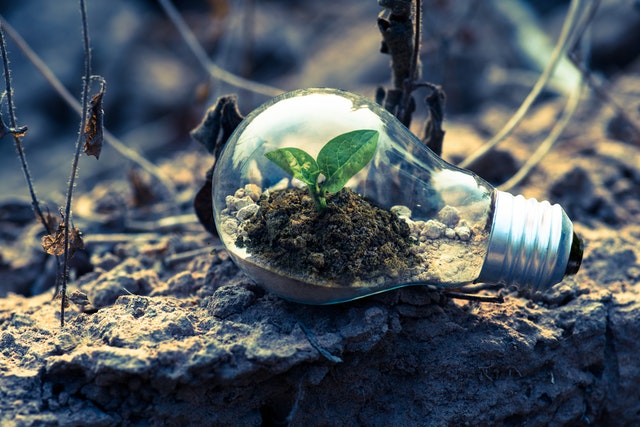
This plant has distinctive characteristics which differentiate it from other philodendron species. Some of its exclusive features are captured below:
1. Height
It hardly grows up to 3 meters in height even when it gets enough light, water and the required soil condition. However, when it’s growing around a tree, it can spread towards the height of the tree. That’s to say that the condition of its environment affects its growth in height and length.
2. Flowers & Leaves
Its leaves are small and pointed because the plant belongs to the vining category of philodendron house plants. The plant only produces flowers when it matures, which may take up to 16 years. Flowers are usually produced between May and July annually.
3. Foliage and Stem
Its stems are usually long and thin, which is why its foliage is described as narrow. Having constricted foliage contributes to its inability to grow at a fast pace despite its epiphytic nature. Being epiphytic implies that it can generate nutrients from the air, rain, or other plants without acting as a parasite on them.
4. Evergreen
This plant can remain freshly green throughout the season provided it’s adequately catered for. Its leaves would turn pale and yellowish if it’s overwatered or doesn’t get enough light. Also, where the condition of its environment is not favourable, its steam and leaves would be discoloured.
Basic Care of Philodendron Chinchamayense
For your plant to turn out well, you must take care of them to ensure they don’t wither. During propagation, it might take a while for your plant to root. But once the root forms, it is of utmost importance to ensure that it is properly taken care of so it can grow into what friends and neighbours will cherish.
Here are a few things to put into consideration while growing your plant:
1. Size & Growth
Keep in mind that this plant is one of the small philodendrons. This implies that its growth in height may not exceed 3 meters, especially if it’s kept in a pot. Nevertheless, it’s important to supply the required water, light and soil to foster its growth.
2. Light Requirement
The light requirement for this plant is indirect sunlight. Although it can thrive well in full sun, excess light can sap its nutrients. That’s why keeping the plant where it can receive indirect bright light is highly recommended.
3. Water Requirement
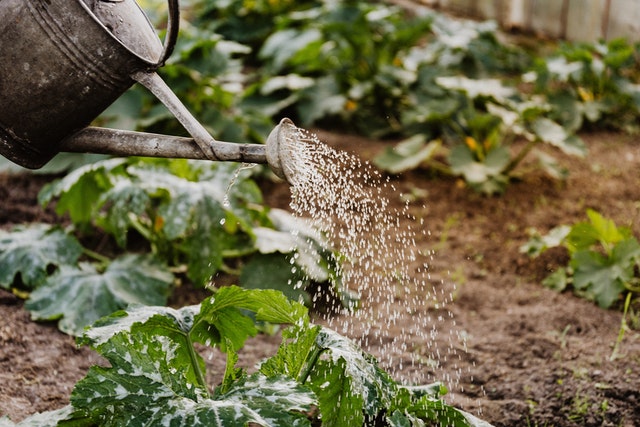
Unlike many other flowering plants, this plant absorbs water through its leaves, hence the need to water it properly. Your plant needs to be watered regularly, so it’s advisable to grow it in a greenhouse or terrarium.
While taking care of this plant and ensuring it’s properly watered, it should also not be over-watered; otherwise, it’ll experience root rot. You can purchase a humidifier or mist the plant’s leaves to strengthen its condition.
4. Soil Requirement
To adequately care for your plant, it should be planted in air-filled soil. While it can survive on any soil, it’s preferable to plant it in slightly acidic, sandy and light soil. Moist sphagnum moss helps a lot when growing this plant. Peats formed by sphagnum decomposers serve as a good source of nutrients for the plant in the soil.
5. Temperature & Humidity
These plants need moderate to high humidity levels to thrive. They often turn out well when grown in the right environment, such as greenhouses, tanks, or terrariums. They also grow well outdoors in areas with humid, hot climates.
They need sufficient sunlight with moderate airflow. The plant’s humidity ranges from 50 to 70%, although it can adapt to lower or higher levels. These plants also prefer a temperature of 65-85 degrees Fahrenheit as they might not grow properly if planted outside of this temperature.
6. Drought & Disease Resistance
Tropical plants, like all philodendrons, cannot survive the absence of water or thrive in low humidity. So, they should not be deprived of water at any point. Also, they have disease-resisting abilities that allow them to grow for years without any problem.
7. Toxicity
Like other philodendron plants, this plant is toxic. Biting or chewing it can irritate. It can also result in oral pain, vomiting, irritation, and drooling.
8. Fertilizing
As mentioned earlier, one of the advantages of growing this plant is that it can adapt to any environment, and you don’t have to break a bank to care for it. Its care also does not require much stress and energy. The plant’s fertilization doesn’t have to be done every time. You can fertilize the plant once or twice a month if you wish to. When you fertilize this plant, do so with a water-soluble fertilizer.
9. Potting & Repotting
This plant doesn’t require repotting all the time. However, you mustn’t hesitate to repot it there’s a need to do so. When repotting, use a sandy and light soil mix and ensure the new pot is larger than the former one.
You can repot your plants when the current pot is broken or cracked; when the soil is crumbly and dry; when the leaves begin to turn yellow; when the plant has outgrown its current pot; or when the plant begins to wilt.
10. Pruning Requirement
These plants don’t require that you prune them regularly, but in case you want to prune them, any wilted or dead leaves should be cut off to make the plants look beautiful and healthy.
How To Propagate Philodendron Chinchamayense?
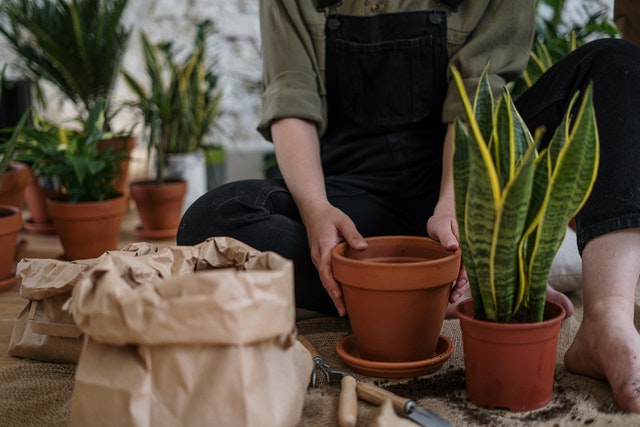
The methods of propagating this plant are straightforward. However, it entails a series of processes which must be carried out meticulously to get the best result. Find below the best tips on how to propagate the tropical house plant:
Cut off three to four leaves from a parent plant
It’s possible to transplant this plant by cutting off leaves from an existing well-grown parent plant. However, before cutting the leaves, ensure they are green and in good condition.
Stick cuttings in a clean jar or water
This is important because once the leaves are detached from their parent plant, they lose nutrients. So, replenish the nutrient by putting them in clean water. Ensure to submerge the nodes.
Expose cuttings to indirect sunlight
Excess sunlight can rid the leaves of the nutrient. Ensure to keep the leaves in a place where the sun’s direct rays cannot affect them.
Wait for the roots to bud
You can’t transplant a leave without its root. It won’t survive. So, you have to wait patiently for new roots to be formed. While you wait, you must keep changing the water until your plant becomes ready for transplant.
Transplant in fibre sphagnum and humid environment
Put your plant in a high humid environment to help them grow well. Also, add fibre sphagnum to the soil in the pot or vase to provide micronutrients for good growth.
Common Problems Caring for Philodendron Chinchamayense
Caring for this houseplant may seem easy, but the truth is, it might get tricky and confusing at times. Some of the likely problems that might affect the growth of this plant are identified below:
1. Overwatering
Most caregivers don’t understand when to stop when it comes to watering this house plant. It might be a tropical plant which requires a great deal of water to thrive daily, but this does not in any way suggest that it should be flooded with water. Misting the leaves and damping the soil are ways of ensuring that the plant is not overwatered.
2. Exposure to direct sunlight
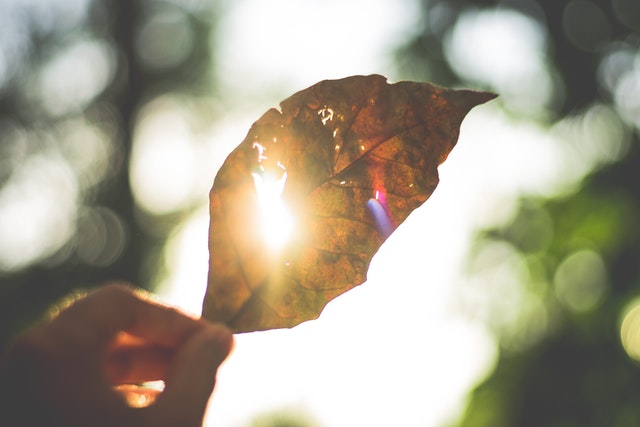
Almost all varieties of philodendrons thrive under low light, and the plant in view is no exception. Exposing it to direct sunlight means killing the plant gradually. So, it’s important to keep the plant where the direct rays of sunlight cannot get to.
3. Toxicity
Growing Philodendrons in a home with kids is not advisable because of its toxic nature. Yes, it’s an anti-pollutant and greatly improves the quality of your living space by beautifying it. Yet, it contains harmful calcium oxalates that are poisonous to the body. It can’t be eaten or mishandled. Thus, it’s best kept in the terrarium when there are kids around.
Learn more from a similar post: Variegated Giganteum
Outro
Regardless of the challenges that may affect the growth of this plant, the Philodendron Chinchamayense remains the perfect house plant for you. This is because of its adaptive qualities and ease of care, not to mention its therapeutic benefit as an air anti-pollutant.
Buying Options
The Philodendron Chinchamayense plant can be purchased on Etsy. It’s a rare commodity which is why you mustn’t delay to buy it. Checkout the market place for price by clicking on the link below:
Frequently Asked Questions
Do philodendrons Chinchamayense produce flowers?
Yes! This house plant is a flowering plant and can produce blossoming flowers upon maturation. The only problem is that this plant does not grow rapidly. Thus, it takes a long time for it to attain maturation. This problem is not exclusive to the Chinchamayense specie but all species of the Philodendron genus.
On average, it takes up to 15 years for them to grow and produce flowers. Note that flowers are budded between May and July of every year, and they signify the plant’s readiness to reproduce.
Are Philodendron Chinchamayense poisonous?
Yes! the plant is poisonous. It contains calcium oxalates that make it toxic when eaten or mishandled. Toxic raphides are present in these oxalates. Thus, ingesting the plant results in oral pain, vomiting irritation, skin irritation and drooling.
It’s best to grow the plant in a greenhouse rather than leaving it in a pot in the corner of your house where it’s exposed to your kids and pets. All species of Philodendron plants suffer from this ill fate. Another type of houseplant poisonous to the health is the Dieffenbachia.
How to tell if the plant needs sun?
The plant needs more sunlight when the plant stems become stretchy and lean; when some parts of the leaves are turning pale and withering; when the plant is not flowering despite being matured enough to do so; and when some parts of the leaves look lanky than other parts.
However, after exposure to sunlight, ensure to regulate the intensity of the light once the plant shows signs of improvement.

Hey, I’m Lisa and I’ve been an avid gardener for over 30 years. I love writing, talking and living in the garden! Feel free to connect with me on my socials below

